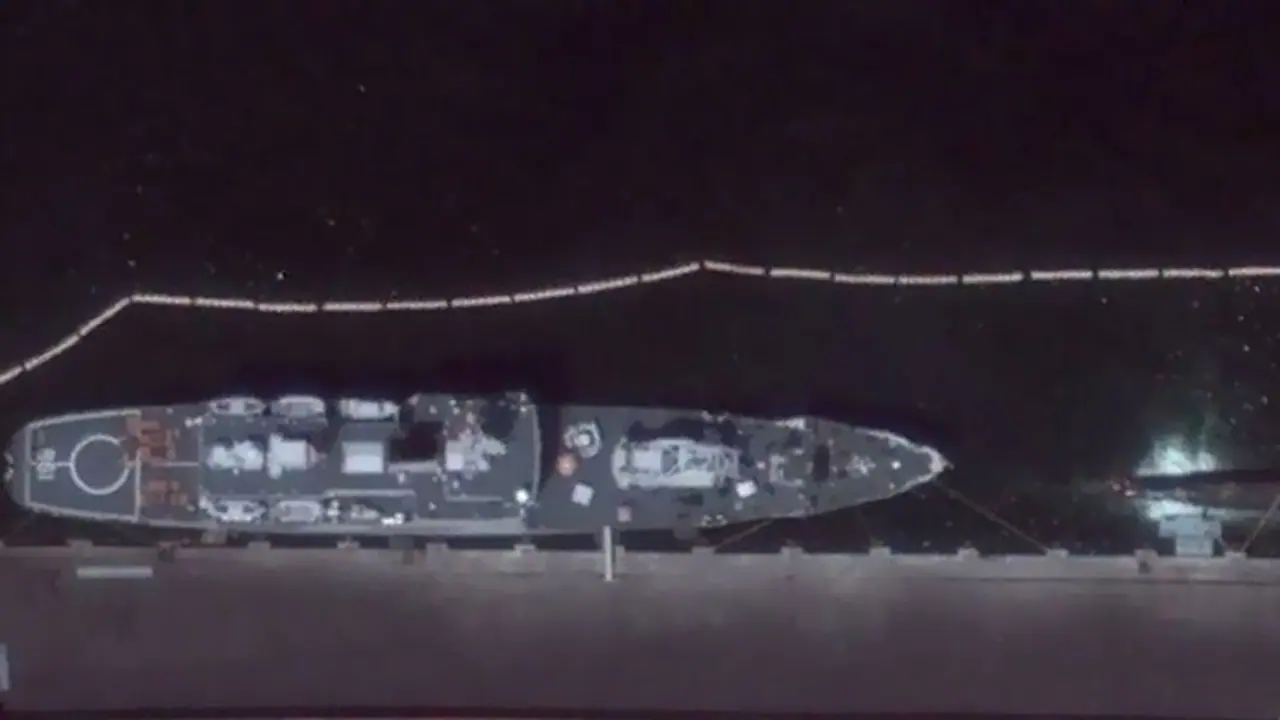It is alarming, because it displays the wide reach of the PLA navy. By its very nature a nuclear submarine rarely surfaces for refuelling. Are Chinese and Pakistan navies are practising a very advanced level of interoperability?

The docking of the Submarine is both alarming and surprising.
It is alarming, because it displays the wide reach of the PLA navy and surprising for the reason that by its very nature a nuclear submarine rarely surfaces for refuelling. That leaves only two options open for the Han class missile attack submarine (Type091) that surfaced in Karachi. Either it had a man or material emergency in the summer of 2016 when the picture was apparently taken – or it was a show of strength. The Han class Submarines have a submerged speed of about 25 knots and displace 5500 tonnes in fully armed capacity. The submarine can carry 20 torpedoes and also has the choice of carrying the sea launched c-801 anti ship missile which can strike up to the range of about 40 kilometres.
The presence of the Submarine is signal to free democracies that the Chinese are running silent, running deep and lurking at will not so far from the US fifth fleet in Bahrain and the Indian navy. The Submarine’s presence is a grave provocation and ups the risk of confrontation in the region.
The interoperability factor
The central factor from the surfacing of this submarine is that the Chinese and Pakistan navies are practicing a very advanced level of interoperability. This is the key factor in war time. The two navies are beginning to match their naval assets, they are exploring joint operations within a common strategy. They are figuring out the command and control issues that arise when two different countries with distinct tactical cultures work in tandem for war outcomes. In sum, interoperability refers to ability to conduct joint warfare at a massive scale.
This assumes significance for India, because the Indian navy has hitherto enjoyed a clear superiority vis a vis Pakistan and has on many occasions displayed it - including bottling the Pakistan Navy in harbour during the Kargil war. However, all of this changes if Chinese nuclear submarine operate together with the Pakistan navy out of the twin ports of Gawader and Karachi. It complicated India’s ability to manage Pakistan’s maritime assets.
The Chinese have lately been very aggressive in other parts of the Indian ocean too. While they claim that their submarine are around the littoral for fighting piracy - it is a little difficult to take that claim seriously as other asserts including cruisers are better suited for that purpose.

The Chinese navy is clearly working on a three pronged strategy, In the first it wants to ensure that it can safeguard its oil supplies 82 % of the 600 million tons that it imported in 2016 passes through the Indian ocean region. Secondly Chinese strategy is now working on “far area defence” away from its shores and thus attempting the paradigm of a blue water navy force projection. Lastly, the Chinese are looking to deepen cooperation with Pakistan to the West and Malaysia to the East - thus forming the flanks of its Indian ocean maritime defence.
Coming years will see more Chinese maritime presence in the Indian ocean. There is an urgent need for India and other navies such as the US and Japan to build deeper trust and interoperability . To that end the focus of the large Malabar exercise with the three navies being on Joint anti submarine operations later in 2017 is a positive first step-in countering aggressive Chinese Outreach in the Indian ocean region.
(The author is a Delhi-based security analyst for defence, foreign policy stories.He was also a visiting fellow at the Institute of Chinese studies, Delhi)
